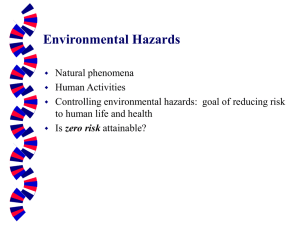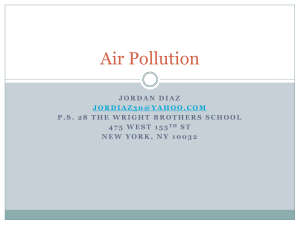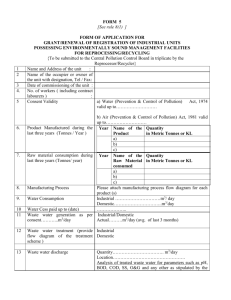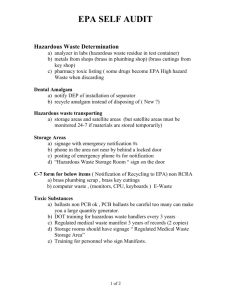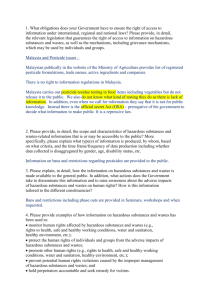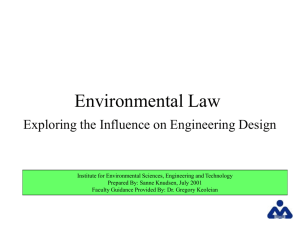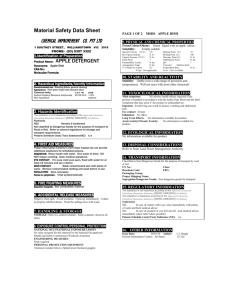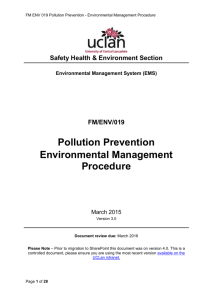Hazardous wastes are:
advertisement
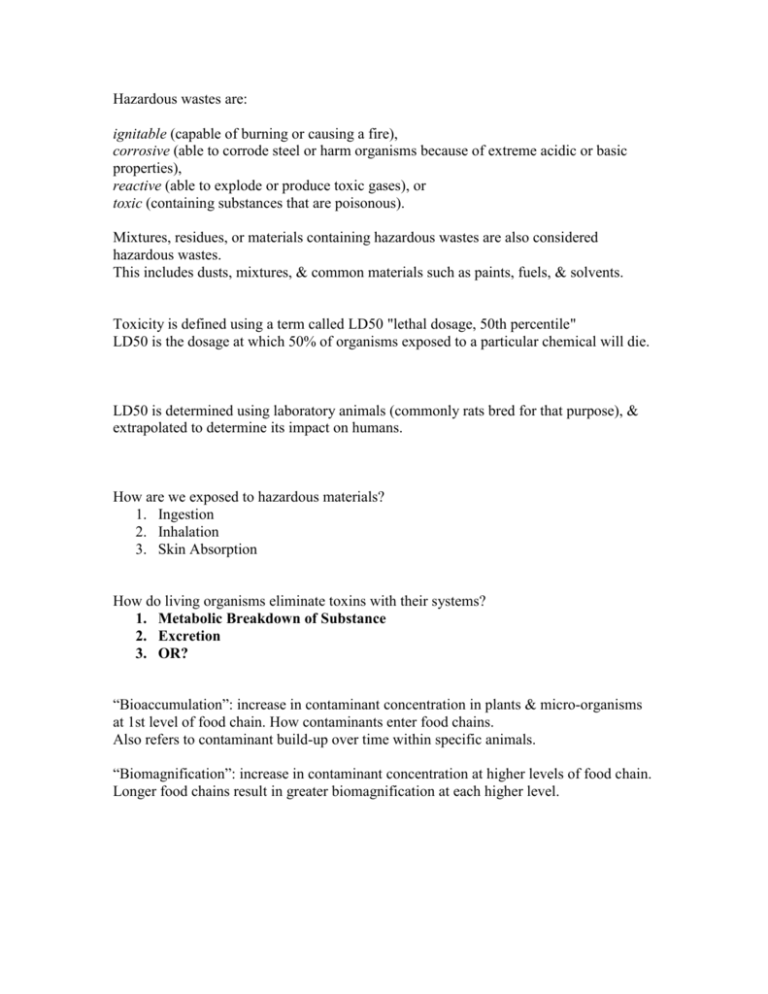
Hazardous wastes are: ignitable (capable of burning or causing a fire), corrosive (able to corrode steel or harm organisms because of extreme acidic or basic properties), reactive (able to explode or produce toxic gases), or toxic (containing substances that are poisonous). Mixtures, residues, or materials containing hazardous wastes are also considered hazardous wastes. This includes dusts, mixtures, & common materials such as paints, fuels, & solvents. Toxicity is defined using a term called LD50 "lethal dosage, 50th percentile" LD50 is the dosage at which 50% of organisms exposed to a particular chemical will die. LD50 is determined using laboratory animals (commonly rats bred for that purpose), & extrapolated to determine its impact on humans. How are we exposed to hazardous materials? 1. Ingestion 2. Inhalation 3. Skin Absorption How do living organisms eliminate toxins with their systems? 1. Metabolic Breakdown of Substance 2. Excretion 3. OR? “Bioaccumulation”: increase in contaminant concentration in plants & micro-organisms at 1st level of food chain. How contaminants enter food chains. Also refers to contaminant build-up over time within specific animals. “Biomagnification”: increase in contaminant concentration at higher levels of food chain. Longer food chains result in greater biomagnification at each higher level. Who sets standards for hazardous substances? US – EPA & Occupational Safety & Health Administration – US Department of Labor US - Department of Transportation's Research & Special Programs Administration: responsible for coordinating national safety program for transportation of hazardous materials by air, rail, highway & water. State of California – Cal-EPA; Cal-OSHA Where can you find out about toxic substances? OSHA Chemical Sampling Information file: lists apx 1,500 substances; EPA's TSCA Chemical Substances Inventory: lists info on > 62k chemicals or chemical substances; Chemical producers provide Material Safety Data Sheets (MSDS) Some libraries maintain files of MSDS for >100k substances. However, relatively little information has been collected on synergistic & chronic exposures to many substances. Comprehensive Environmental Response, Compensation, & Liability Act (CERCLA), commonly known as Superfund- enacted by Congress in 1980. Created tax on chemical & petroleum industries & provided broad Federal authority to respond directly to releases or threatened releases of hazardous substances that may endanger public health or environment. Over 5 years, $1.6 billion collected & went to a trust fund for cleaning up abandoned or uncontrolled hazardous waste sites. There are > 40,000 Superfund sites in U.S. & its territories. ~10,000 are on "current" list. In general, Superfund sites are where serious hazards exist which are threats to health. Most states have reporting mechanisms for hazardous waste problems & only the most serious of these incidents are reported to EPA for list. Example: Massachusetts Department of Environmental Protection lists >8,000 sites (2002), of which only ~1,000 placed on Superfund list. The Hazard Ranking System (HRS)- principal EPA mechanism to place uncontrolled waste sites on list. HRS factors grouped into 3 categories: • likelihood of release into the environment; • characteristics of waste (e.g. toxicity & quantity) • targets (people or sensitive environments) affected by release. 4 pathways scored under HRS: • ground water migration (drinking water); • surface water migration (drinking water, human food chain, sensitive environments); • soil exposure (resident population, nearby population, sensitive environments); • air migration (population, sensitive environments). The Pollution Prevention Act of 1990, establishes pollution prevention as a "national objective." Notes that: "There are significant opportunities for industry to reduce or prevent pollution at the source through cost effective changes in production, operation, and raw material use... The opportunities for source reduction are often not realized because existing regulations, and the industrial resources they require for compliance, focus upon treatment and disposal, rather than source reduction... Source reduction is fundamentally different and more desirable than waste management and pollution control." Environmental Protection Hierarchy The Act establishes a hierarchy of environmental protection measures, declaring that pollution should be prevented or reduced at the source wherever feasible, while pollution that cannot be prevented should be recycled in an environmentally safe manner. In the absence of feasible prevention or recycling opportunities, pollution should be treated; disposal or other release into the environment should be used as a last resort. Definition of Pollution Prevention Means: "source reduction" (as further defined below), & other practices that reduce or eliminate the creation of pollutants through: - increased efficiency in the use of raw materials, energy, water, or other resources, or - protection of natural resources by conservation. - Definition of source reduction Any practice which reduces the amount of any hazardous substance, pollutant or contaminant entering any waste stream or otherwise released into the environment (including fugitive emissions) prior to recycling, treatment or disposal; & which reduces the hazards to public health & the environment associated with the release of such substances, pollutants, or contaminants. Provisions Pollution Prevention Act establishes independent EPA office (Office of Pollution Prevention & Toxics) job: develop & implement strategy to promote source reduction. Law directs EPA to: - facilitate adoption of source reduction techniques by businesses & other federal agencies; - establish standard methods of measurement for source reduction; - review regulations to determine effect on source reduction; - investigate opportunities to use federal procurement to encourage source reduction; - develop improved methods for providing public access to data collected under federal environmental statutes; - develop a training program on source reduction.
